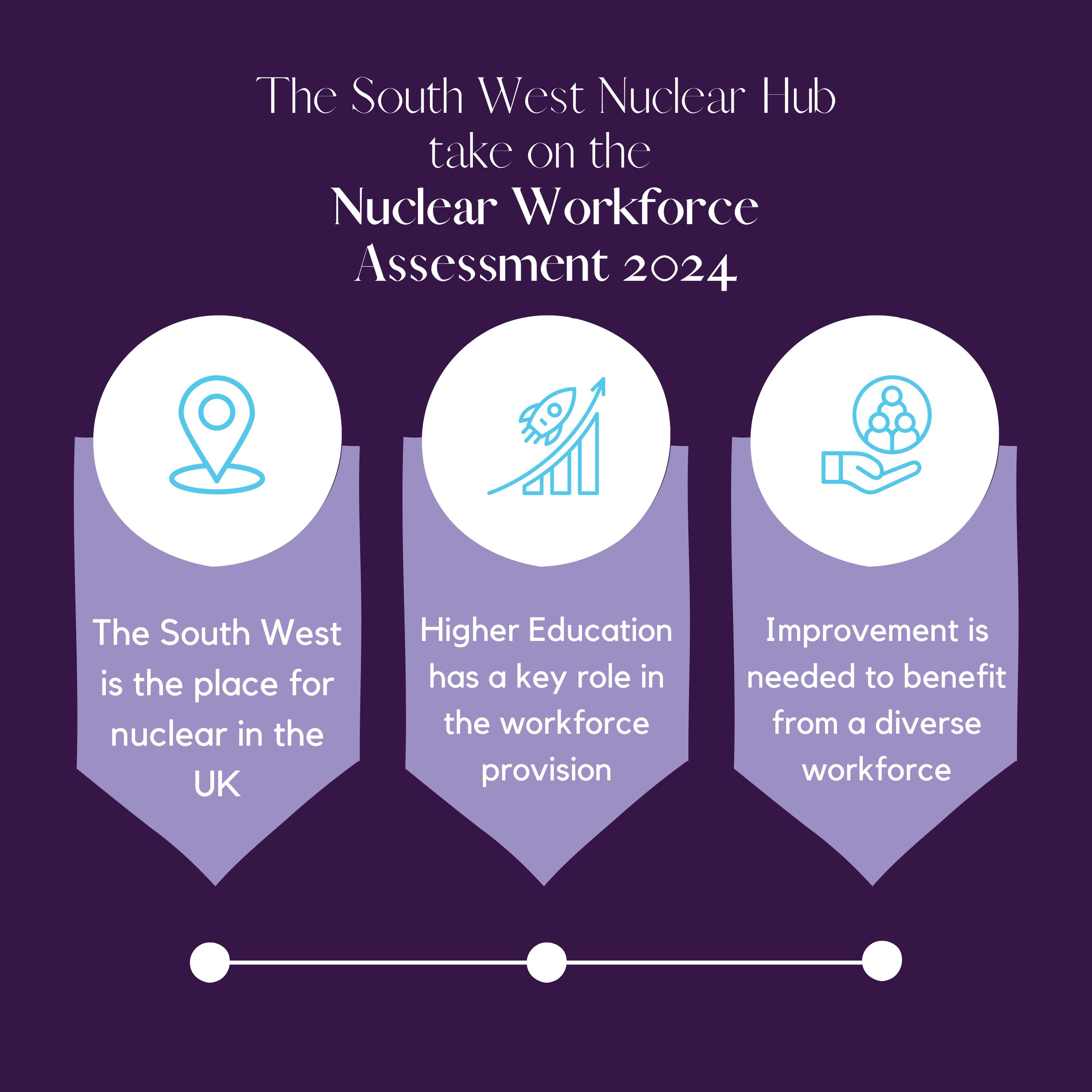This month, Cogent Skills published the latest Nuclear Workforce Assessment to catalogue the sector’s workforce trends and future demands. The South West Nuclear Hub’s Research and Strategy Manager, Tom Robinson, picks out some key talking points.

The South West is the place for nuclear in the UK
Nuclear in the South West continues to grow, with nuclear new build and nuclear defence programmes ramping up. Last year, Hinkley Point C moved to double shifts, increasing the number of workers at the site; Great British Nuclear started site investigations at Oldbury ready for the conclusion of the Small Modular Reactor competition this spring; and significant progress has been made in nuclear defence programmes including on the Dreadnought submarines, AUKUS submarines and nuclear deterrent.
The South West plays a key role in all these new activities and this is reflected in a 14% growth in the workforce in our region. It is interesting to compare the figures in the Nuclear Workforce Assessment with those stated in the Nuclear Industry Association Jobs Map 2024: the two sources differ in the region’s figures at 17,301 and 27,249 respectively, but both sources show the same growth figure of 14%, and list the South West as the second largest nuclear region in the UK.
Of greater note, the demand in the South West, i.e. the predicted number of jobs that will require filling, outstrips every other region and looks to double the number of roles by 2030. This places the South West at the forefront of the nuclear industry not only today, but in the future. The South West Nuclear Hub will continue to support this growth by providing the space for sector experts to collaborate and developing the nuclear skills base.
Higher Education has a key role in the workforce provision
The Nuclear Workforce Assessment states that 27% of nuclear workers have qualifications at Level 6 (degrees and equivalents) or above. One in nine workers have qualifications at Level 7 or 8 (Masters and PhDs or equivalent). These high proportions demonstrate the importance of higher education in the nuclear workforce, and the vital role that universities play in delivering the future workforce.
Recruitment
This year 8768 people were recruited to the sector. With 2% of the workforce having PhDs, this equates to 175 PhD graduates recruited this year. To maintain the current expertise in the nuclear workforce the UK needs to support at least this many PhDs annually to fill the recruitment pipeline. The National Nuclear Strategic Plan for Skills aims to quadruple nuclear-related PhDs and this aim needs financial backing from government and industry. We need to train the next generation of subject-matter experts, who are critical to maintain the UK’s international leadership.
“The National Nuclear Strategic Plan for Skills aims to quadruple nuclear-related PhDs – this aim needs financial backing from government and industry”
Recruitment at the Masters level is even stronger, with an equivalent of 789 recruits into the sector this year. There are serious pressures on nuclear Masters courses across the UK resulting in hiatuses and even course closures. Generic Masters degrees in Engineering, Science and other disciplines can support some of this need, but dedicated nuclear Masters courses (such as the course supported by the South West Nuclear Hub) have a much higher conversion rate of students directly entering the sector. This makes dedicated Nuclear Masters courses crucial to supporting this key resource.
Turnover
In 2023, one quarter of industry leavers had a level 6 qualification. Nearly half of all industry leavers were comprised of those with a qualification at level 6, 7 or 8. This makes the number of leavers disproportionately higher for workers with higher qualifications. While factors impacting retention are undefined, it is clear that more recruitment at these levels is needed to account for this higher turnover. The South West Nuclear Hub will continue to advocate for increasing training capabilities at universities which will be able to accommodate the required number of graduates directly entering the nuclear sector.
Research
Predictions for the nuclear research workforce demand paints a similar story: it is currently anticipated that between 650-730 additional recruits in nuclear research will be required at each reported key year point over the next two decades (see Table 24 in the NWA Report). With both PhD students and nuclear academics being reflected in these figures, these predictions reinforce the South West Nuclear Hub mission to support leading research collaborations within our network and across the nuclear sector. Nuclear research underpins the nuclear portfolio and must be properly resourced.
Improvement is needed to benefit from a diverse workforce
The Nuclear Workforce Assessment strikes a fairly neutral tone in regard to equality, diversity and inclusion, noting an increase in responses on a range of protected characteristics; modest increases in representation remain below national averages. The figures themselves show work is needed for nuclear to support a diverse workforce and gain the benefits from a broader talent pool.
Nuclear still retains the “double hump” in its age distribution, synonymous with reduced recruitment in the 2000s and 2010s, but the workforce is getting younger with 47% now under the age of 40. The age of the workforce should not be seen as a measure of success in of itself, but 60% of recruits are under the age of 30. The industry needs to consider how to attract younger workers into the sector, but more importantly provide the supportive environment to allow them to flourish. More experienced workers have increasingly important roles in forging inclusive workplace cultures, providing mentorship and setting standards.
Forging an inclusive workplace culture is important to attract, retain and develop all individuals. Across all metrics, the “prefer not to say” response is a notable fraction. There were increases in “prefer not to say” responses in gender, sexuality and (dis)ability. When answering on ethnicity, “prefer not to say” is the second highest response after white. Is this indicative that the workplace is not culturally competent? A symptom of an influx of new workers to the sector? Or something entirely different? Regardless of the reason, a high number of “prefer not to say” does not suggest a workplace where people feel comfortable to disclose this information, and so potentially not be themselves at work. Nuclear should continue to strive for inclusive working environments so all people can grow and the sector can benefit from the unique talents and capabilities of individuals.
Recruitment of Engineers is a notable success story in nuclear. In 2024, there was a split of 53:47 male to female Engineers recruited, following a 52:48 split in 2023, almost gender parity. This contrasts well to the general figure of only 15.7% of women in engineering and technology occupations in 2023, EngineeringUK. Recruitment is only part of the story, however, and continuous work is needed to support inclusive working environments.

